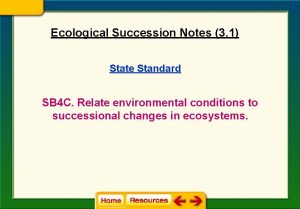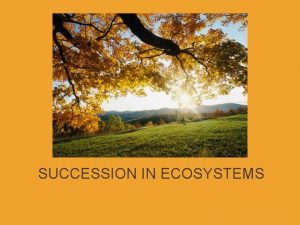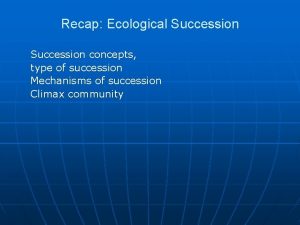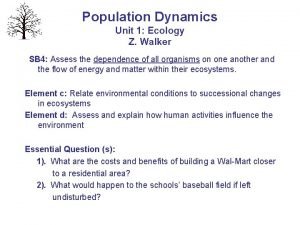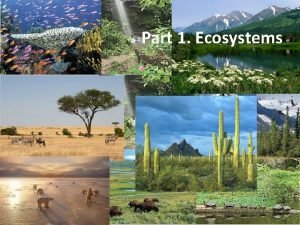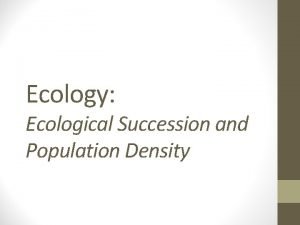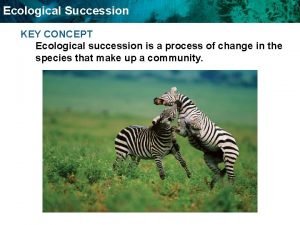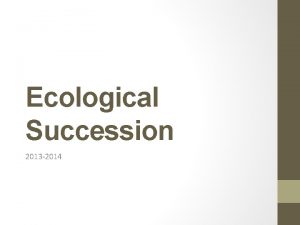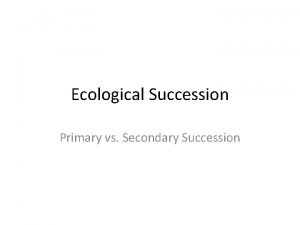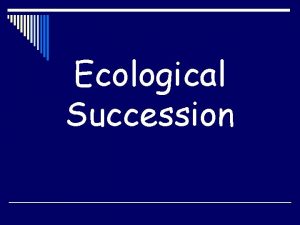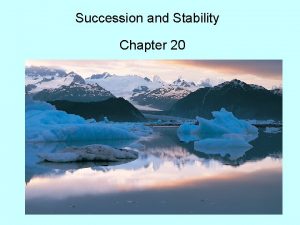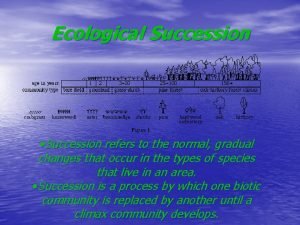Ecological Succession Chapter 1 Lesson 4 Succession gradual









- Slides: 9

Ecological Succession Chapter 1 Lesson 4

• Succession – gradual development of a community over time – Example: the regrowth of a forest after a wild fire – Takes place in all communities (not just those disturbed by things like fire) – Occurs in predictable stages over time

• Primary Succession – Occurs when a small community of living things starts to live in an area not previously containing organisms. – There is no soil, usually just bare rock – Over a very long time organisms live and die on the rock and the rock is slowly transformed into soil.

Steps of Primary Succession 1. Bare rock is exposed (ex. retreating glacier) 2. Lichens grow on the rock. Acids from the lichens begin breaking down the rock. These pieces mix with the dead lichens to form soil. - Lichens are a pioneer species 3. When the soil is deep enough, mosses begin to grow and eventually replace the lichens. Other tiny organisms also live in the soil and when they die, add to the soil. 4. The soil layer thickens and moss is replaced by ferns. Ferns are then replaced by grasses and finally by shrubs and small trees. 5. After hundreds or thousands of years the soil may be deep enough to support a forest.


• Secondary Succession – Occurs when an existing community is destroyed by a natural disaster such as fire or flood – If the soil is left intact, the original plant community may regrow in a series of stages

• Steps of Secondary Succession 1. The 1 st year after the disturbance many weeds will grow. Crabgrass is most common 2. By the 2 nd year, new weedy plants appear, their seeds having blown in or been deposited by insects 3. In 5 -15 years small pine trees grow among the weeds. After about 100 years a forest may grow 4. As older pines die, they are replaced by hardwoods in some climates

• Succession ends when a stable community has developed. – This can be a hardwood forest or a desert as shown below.

Review • What is a difference between Primary & Secondary succession? – Primary – newly inhabited area – Secondary – an existing community is destroyed and must redevelop – Other differences? ? ? • How are lichens described by ecologists? – Pioneer species • How long can it take for a stable community to develop? – Hundreds or thousands of years

